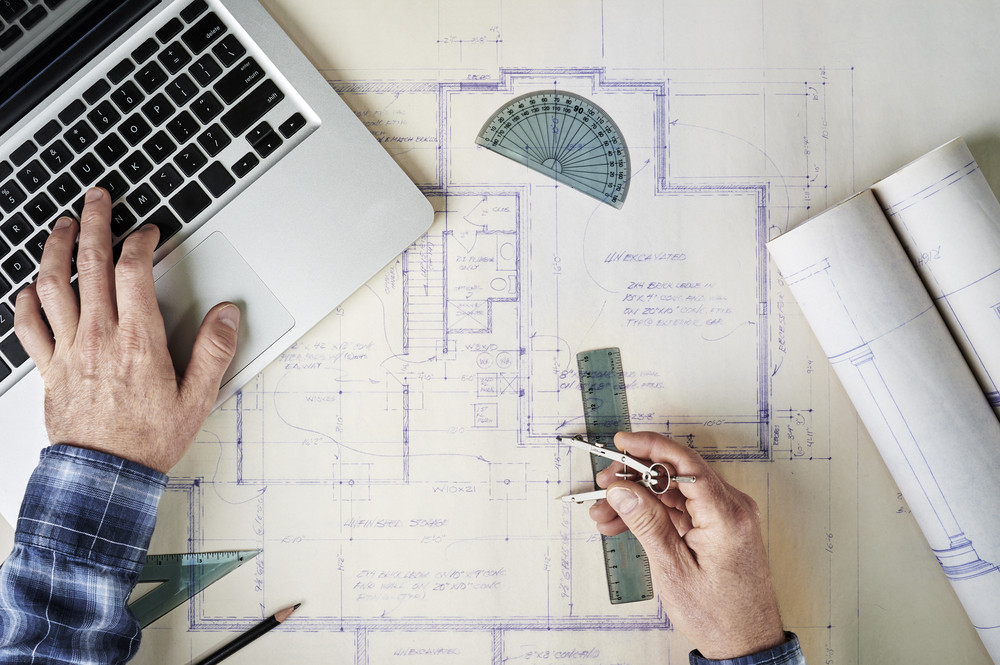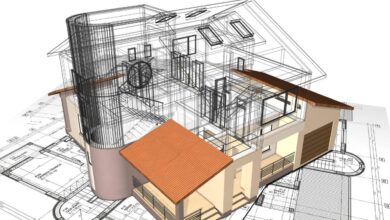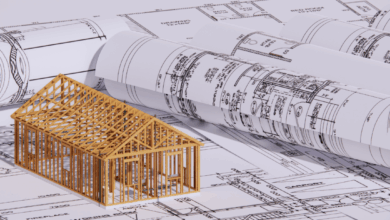Architecture’s Digital Leap: Technology and Profit

The profession of architecture, long revered as a delicate and demanding blend of artistic genius and structural science, finds itself at the epicenter of a massive, unavoidable digital transformation that is fundamentally redefining both the design process and the economic realities of running a successful firm.
Historically, the output was defined by paper blueprints and physical models, methods that were slow, prone to error, and financially inefficient, but today, every line, texture, and structural detail is managed within a complex, interconnected digital ecosystem.
This profound technological shift is far more than an upgrade in drafting software; it is a complete overhaul of the workflow, compelling architects to integrate powerful new tools—from Building Information Modeling (BIM) and Parametric Design to Artificial Intelligence (AI)—not just to create more complex forms.
crucially, to maximize operational efficiency, mitigate crippling project risks, and ensure the firm’s long-term financial viability.
For any practice, regardless of its scale, embracing this digital imperative is no longer an option but an absolute necessity for survival and growth in a highly competitive market that increasingly values speed, precision, and demonstrable value beyond aesthetics.
The ability to harness these new technologies directly impacts a firm’s fee structure, utilization rates, and ability to manage the perpetual threat of budget overruns, making technological proficiency the single most critical factor that converts creative vision into sustainable, profitable business success in the 21st century.
Pillar One: BIM as the Economic Engine

Building Information Modeling (BIM) is the foundational technology that shifted architecture from simple digital drafting (CAD) to a data-rich, financially intelligent, and collaborative process, acting as the economic engine for the modern firm.
1. Data Intelligence and Cost Control
BIM models are not merely three-dimensional drawings; they are centralized databases containing all the information required to manage costs and construction.
A. Real-Time Quantity Take-Offs
A. The intelligent BIM model automatically tracks the precise quantities of all materials (e.g., cubic yards of concrete, square footage of glazing) as the architect designs.
B. This eliminates the need for time-consuming, error-prone manual measurement from 2D drawings.
C. This data is the foundation for generating highly accurate and instantaneous cost estimates at every stage of the design.
B. Instantaneous Budget Monitoring
A. By linking the automatic quantity take-offs to current market pricing databases, the BIM model allows the firm to monitor the project’s estimated cost in real-time.
B. Any design change, such as increasing a window size, triggers an immediate and accurate budget update, allowing the architect to make instant financial corrections.
C. This proactive cost control significantly reduces the risk of massive budget overruns discovered late in the documentation phase.
C. Integrated Value Engineering (VE)
A. BIM facilitates Value Engineering (VE) by allowing the team to quickly model and compare the life-cycle cost of different material options side-by-side.
B. The architect can easily demonstrate the long-term operational cost savings (e.g., energy efficiency) of a higher initial investment (e.g., better insulation).
C. This data-driven approach shifts the focus from simply cutting construction costs to maximizing the project’s overall long-term financial value.
2. Efficiency and Risk Mitigation
The collaboration and accuracy inherent in BIM directly mitigate the largest threats to a firm’s profitability: errors and time delays.
A. Automated Clash Detection
A. BIM software allows the architect to overlay models from structural, mechanical, and electrical engineers.
B. The system automatically runs clash detection tests to identify conflicts, such as a large ventilation duct running straight through a structural beam.
C. Catching these conflicts digitally saves immense time and money that would otherwise be lost to change orders and rework on the construction site.
B. Streamlined Documentation
A. Changes made in the 3D BIM model are instantly and automatically reflected across all 2D plans, sections, and schedules.
B. This automated coordination drastically reduces errors and inconsistencies in the Construction Documents (CDs).
C. The improved accuracy minimizes the firm’s exposure to Errors and Omissions (E&O) liability claims.
Pillar Two: Technology for Innovation and Competition
Advanced digital tools are moving beyond documentation to unlock complex design opportunities and create a competitive advantage in the marketplace.
1. Parametric and Computational Design
This methodology uses algorithms to generate and optimize complex forms, allowing firms to undertake projects previously deemed too difficult or costly.
A. Algorithmic Form Generation
A. Architects use tools like Rhino and Grasshopper to define a set of mathematical rules, constraints, and performance goals.
B. The software then generates optimal geometric solutions, resulting in the fluid, complex, and non-standard forms seen in contemporary architecture.
C. This capability allows firms to compete for and win high-profile, signature projects that command premium fees.
B. Performance-Driven Optimization
A. Computational tools directly link the building’s form to environmental factors.
B. Architects can run simulations to optimize the facade’s angle for solar shading, its curvature for wind resistance, or its geometry for structural efficiency.
C. This data-driven optimization is crucial for achieving the rigorous energy targets of sustainable and net-zero buildings.
2. Visualization and Client Acquisition
Immersive technology transforms how architects sell their vision, directly impacting the firm’s ability to win contracts and manage client expectations.
A. Virtual Reality (VR) Walkthroughs
A. VR allows clients and stakeholders to walk through the proposed building at full scale before construction begins.
B. This immersive experience improves client comprehension of space, proportions, and atmosphere, leading to faster design approval.
C. VR minimizes late-stage changes by allowing the client to experience and accept the design early in the process.
B. Photorealistic Rendering
A. Advanced rendering software creates images that are often indistinguishable from actual photographs, communicating the final materiality and lighting conditions.
B. High-quality visualizations are essential marketing tools that distinguish a firm’s proposal from its competitors during the client selection process.
C. Using cloud-based rendering offloads intensive computing work, maximizing the design team’s productive time.
Pillar Three: Operational Efficiency and Financial Strategy

Technology is essential for managing the firm’s internal economic health, ensuring that labor hours are maximized and costs are controlled.
1. Project Management Software (PMS)
Sophisticated software ensures that labor hours—the firm’s most valuable asset—are tracked, managed, and billed accurately.
A. Real-Time Labor Tracking
A. PMS tools allow employees to log their time directly against specific project phases and budgeted tasks.
B. This provides the project manager with an instant comparison of budgeted hours versus actual consumed hours.
C. Managers can immediately identify projects heading toward budget overruns and take corrective action (e.g., issuing a Change Order).
B. Utilization and Profitability Analysis
A. The software calculates the firm’s utilization rate (billable time) and employee efficiency, metrics crucial for strategic staffing.
B. It helps managers accurately allocate staff with the right billing rates to the correct project phases to maximize profit margins.
C. The data informs leadership decisions on hiring, training, and setting future fee structures.
2. The Digital Twin and Post-Occupancy Revenue
The BIM model’s value now extends far beyond construction, creating new revenue streams for the architect after the building is completed.
A. Operations and Maintenance (O&M) Integration
A. The final, data-rich BIM model can be handed over to the client for use as the building’s Digital Twin.
B. Facility managers use this model to track and manage maintenance schedules, asset lifecycles, and energy performance for decades.
C. This creates a new service line for architects: providing post-occupancy consulting and data management based on the Digital Twin.
B. Adaptive Reuse and Upgrades
A. Maintaining the Digital Twin of the building makes future renovations, upgrades, or adaptive reuse projects vastly more efficient.
B. The architect retains the deepest knowledge of the building’s infrastructure, positioning the firm to secure future, profitable contracts for its modernization.
C. The Digital Twin serves as a continuous revenue generator throughout the building’s entire lifecycle.
Conclusion
Technological mastery is the fundamental factor that converts architectural creativity into sustainable business success.
BIM acts as the financial backbone, providing real-time cost control and mitigating the immense risk of documentation errors.
Computational tools enable firms to win competitive contracts by creating highly optimized, complex, and performance-driven designs.
Visualization technologies like VR and photorealistic rendering speed up client approval and serve as powerful, essential marketing tools.
Project management software ensures that the firm’s most critical resource—staff time—is efficiently utilized, tracked, and billed accurately.
The BIM model’s evolution into a Digital Twin creates new, recurring revenue streams by offering post-occupancy facility management services.




